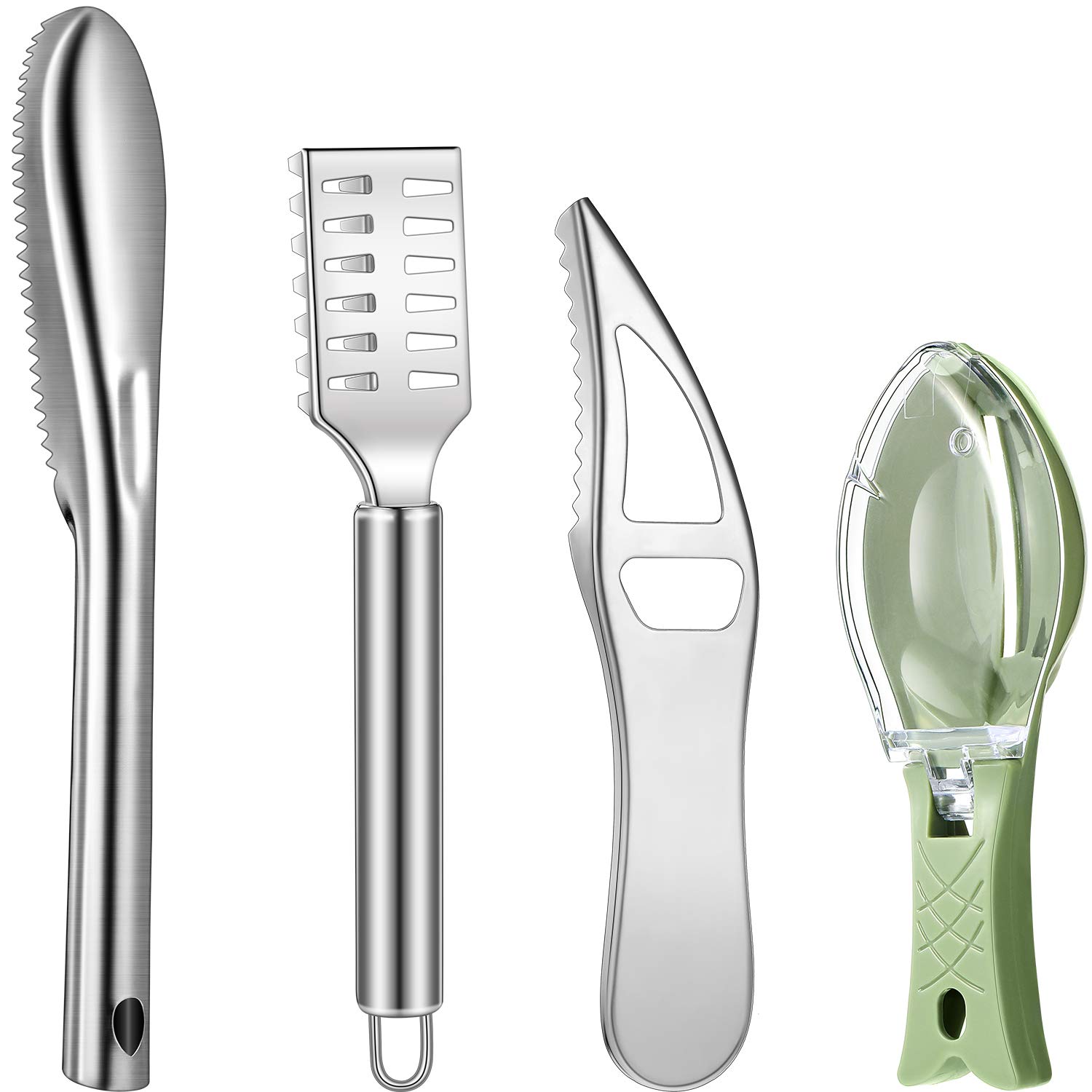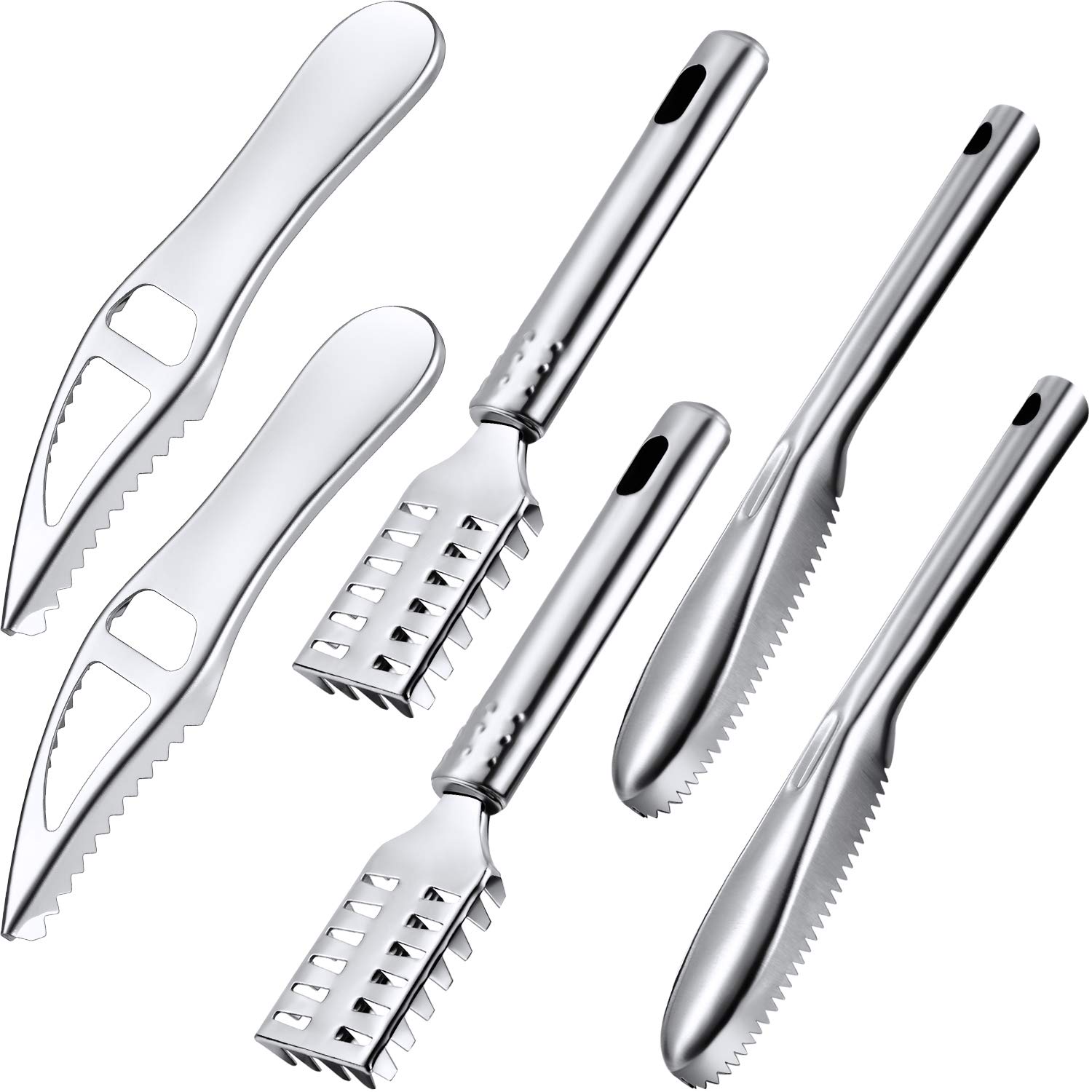Introduction Fishing is a beloved pastime that allows us to connect with the natural world and savor the rewards of our efforts. However, the process of preparing a caught fish for consumption or preservation extends beyond the thrill of the hunt. One crucial step in this process is scaling, the removal of the fish’s protective outer layer of scales. While this task may seem straightforward, using the proper fish scaler tool can make all the difference in efficiency, effectiveness, and the overall quality of the final product. In this comprehensive guide, we’ll explore the importance of fish scaling, the various types of scaler tools available, and the techniques for using them effectively to elevate your fish-cleaning experience.
The Significance of Fish Scaling

Understanding the Purpose of Scaling
Scaling is an essential step in preparing fish for cooking or storage. The fish’s scales serve as a protective barrier, helping to maintain the fish’s overall health and integrity. By carefully removing these scales, you can prepare the fish for further processing, such as filleting or cooking, while also improving the texture and flavor of the final dish.
The Challenges of Manual Scaling
Traditionally, fish scaling has been a labor-intensive and often tedious task, requiring the angler to manually scrape or pluck the scales off the fish’s body. This manual approach can be time-consuming, physically demanding, and, if not done properly, can result in damage to the fish’s delicate flesh. It’s here that the fish scaler tool becomes a valuable asset, streamlining the scaling process and ensuring a more efficient and precise outcome.

Introducing the Fish Scaler Tool
The Versatility of Scaler Designs
Fish scaler tools come in a variety of designs, each tailored to address specific needs and preferences. From simple handheld scrapers to electric-powered devices, the range of options available allows anglers to choose the tool that best suits their scaling requirements, fishing environment, and personal preferences.
Key Features to Consider
When selecting a fish scaler tool, several key features should be taken into consideration. Look for a tool with a sharp, durable blade or scraping surface that can effectively remove scales without excessive effort or damage to the fish. Additionally, consider the ergonomics of the tool, ensuring a comfortable and secure grip for efficient scaling. Some advanced scaler tools may also incorporate additional features, such as built-in fish holders or scaled measurement guides, to further streamline the cleaning process.
Mastering the Art of Fish Scaling
Preparing the Fish and Tool
Before beginning the scaling process, it’s essential to ensure that both the fish and the scaler tool are properly prepared. Thoroughly clean and disinfect the fish to remove any dirt, debris, or contaminants that may be present. Similarly, ensure that the scaler tool is clean and free of any residue or damage that could compromise the quality of the scaling.

Proper Scaling Techniques
The actual scaling process should be carried out with care and precision. Gently hold the fish in a secure position, ensuring that it remains stable and minimizing any unnecessary stress or damage. Apply the scaler tool at the recommended angle and apply gentle, even pressure as you work your way along the fish’s body, removing the scales in a systematic and efficient manner.
Finishing Touches and Cleanup
Once the scaling is complete, take the time to thoroughly clean the fish, removing any remaining scales or debris. This step is crucial not only for the final presentation of the fish but also to ensure a safe and enjoyable cooking or storage experience. Properly dispose of the discarded scales and clean the work area to maintain a hygienic and organized workspace.
Specialized Fish Scaler Tools
Electric Fish Scalers
For those who regularly process large quantities of fish or prefer a more automated approach, electric fish scalers can be a game-changer. These powered devices use high-speed rotating discs or brushes to quickly and efficiently remove scales, significantly reducing the time and effort required for the task. When using an electric scaler, be mindful of the tool’s power and apply it with care to avoid damage to the fish’s flesh.

Multi-Purpose Scaling Devices
In addition to dedicated fish scalers, there are also multi-purpose tools that can handle a variety of fish-cleaning tasks, including scaling. These versatile devices may incorporate features like knives, pliers, and even built-in scale collectors, making them a convenient all-in-one solution for the avid angler.
Safety and Ergonomics
Protecting Your Hands
Fish scaling can be a physically demanding task, and using the wrong tool or technique can lead to cuts, scrapes, and other injuries to your hands. Invest in a high-quality pair of cut-resistant gloves to safeguard your fingers and palms during the scaling process. Additionally, consider the ergonomics of the scaler tool, ensuring a comfortable and secure grip to minimize the risk of slippage or fatigue.
Maintaining a Clean and Organized Workspace
A clean and organized work area is not only essential for food safety but can also contribute to the overall efficiency and safety of the fish-cleaning process. Designate a dedicated space for scaling and cleaning, and ensure that you have the necessary tools and supplies readily available. Properly dispose of discarded scales and other waste to maintain a tidy and hygienic environment.

The Importance of Education and Regulation
Staying Informed and Trained
Effective and responsible fish scaling requires a solid understanding of the proper techniques, as well as the potential risks and consequences. Seek out educational resources, such as online tutorials, workshops, or guidance from experienced anglers or fish-cleaning professionals, to ensure you’re using the scaler tool correctly and maintaining the highest standards of food safety.
Regulatory Considerations
In some regions, the handling and processing of fish may be subject to specific regulations and guidelines. Be sure to familiarize yourself with the requirements in your area, as improper fish cleaning or scaling methods could result in fines or other penalties. Adherence to these regulations demonstrates a commitment to responsible angling and food preparation practices, contributing to the overall health and safety of the seafood supply.
Conclusion
The fish scaler tool is an essential piece of equipment for any angler or home cook who regularly prepares their own catch. By understanding the importance of scaling, mastering the proper techniques, and selecting the right tool for your needs, you can streamline the fish-cleaning process, ensure the quality and safety of the final product, and elevate your overall fishing and culinary experiences. Remember, the responsible use of a fish scaler tool not only benefits the fish but also enhances your own reputation as a conscientious and skilled angler. Embrace the power of the scaler, and let it guide you towards a more efficient, enjoyable, and sustainable fishing future.




















